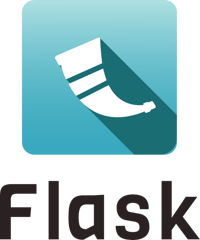Large Applications as Packages¶
Imagine a simple flask application structure that looks like this:
/yourapplication
yourapplication.py
/static
style.css
/templates
layout.html
index.html
login.html
...
While this is fine for small applications, for larger applications it’s a good idea to use a package instead of a module. The Tutorial is structured to use the package pattern, see the example code.
Simple Packages¶
To convert that into a larger one, just create a new folder
yourapplication inside the existing one and move everything below it.
Then rename yourapplication.py to __init__.py. (Make sure to delete
all .pyc files first, otherwise things would most likely break)
You should then end up with something like that:
/yourapplication
/yourapplication
__init__.py
/static
style.css
/templates
layout.html
index.html
login.html
...
But how do you run your application now? The naive python
yourapplication/__init__.py will not work. Let’s just say that Python
does not want modules in packages to be the startup file. But that is not
a big problem, just add a new file called pyproject.toml next to the inner
yourapplication folder with the following contents:
[project]
name = "yourapplication"
dependencies = [
"flask",
]
[build-system]
requires = ["flit_core<4"]
build-backend = "flit_core.buildapi"
Install your application so it is importable:
$ pip install -e .
To use the flask command and run your application you need to set
the --app option that tells Flask where to find the application
instance:
$ flask --app yourapplication run
What did we gain from this? Now we can restructure the application a bit into multiple modules. The only thing you have to remember is the following quick checklist:
the
Flaskapplication object creation has to be in the__init__.pyfile. That way each module can import it safely and the__name__variable will resolve to the correct package.all the view functions (the ones with a
route()decorator on top) have to be imported in the__init__.pyfile. Not the object itself, but the module it is in. Import the view module after the application object is created.
Here’s an example __init__.py:
from flask import Flask
app = Flask(__name__)
import yourapplication.views
And this is what views.py would look like:
from yourapplication import app
@app.route('/')
def index():
return 'Hello World!'
You should then end up with something like that:
/yourapplication
pyproject.toml
/yourapplication
__init__.py
views.py
/static
style.css
/templates
layout.html
index.html
login.html
...
Circular Imports
Every Python programmer hates them, and yet we just added some:
circular imports (That’s when two modules depend on each other. In this
case views.py depends on __init__.py). Be advised that this is a
bad idea in general but here it is actually fine. The reason for this is
that we are not actually using the views in __init__.py and just
ensuring the module is imported and we are doing that at the bottom of
the file.
Working with Blueprints¶
If you have larger applications it’s recommended to divide them into smaller groups where each group is implemented with the help of a blueprint. For a gentle introduction into this topic refer to the Modular Applications with Blueprints chapter of the documentation.
